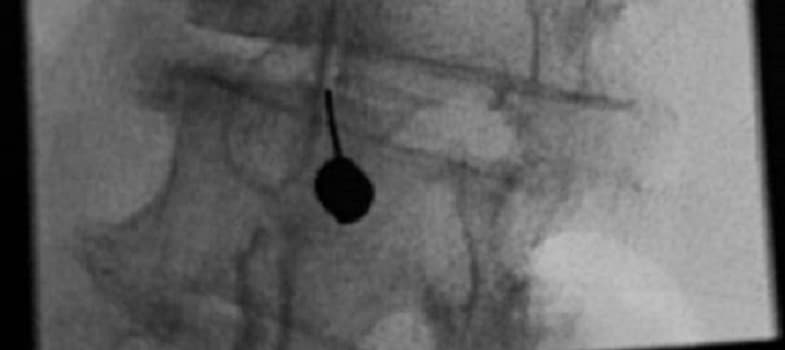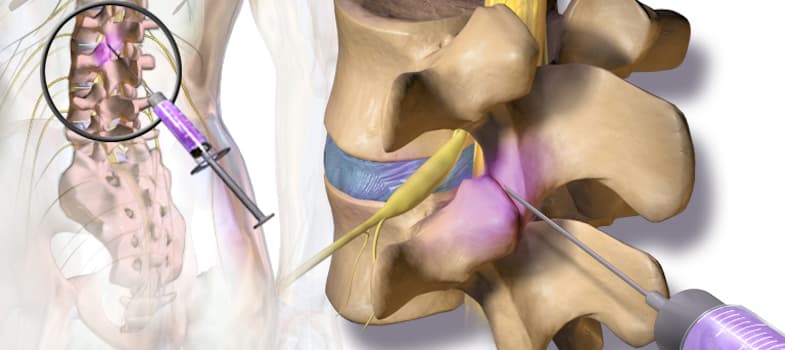What Is Facet Joint Syndrome?
Facet joint syndrome is a condition that is also called facet joint pain. It generally develops as a result of damage to or the degeneration of facet joints. Arthritis or an injury to the joints are additional conditions that can lead to the inflammation of facet joints and the development of pain in the region where the affected joints are located.
Facet joints, which are also called zygapophyseal joints, are small bony structures that stabilize the vertebrae in the spine. The facet joints are shaped like bony knobs and they are located between spinal vertebrae. More specifically, they connect vertebrae together in a chain-like manner and promote movement in a variety of directions. Each vertebra, except for the ones that are at the top of the spine and at the bottom, has one facet joint that connects it to the vertebra above it and a second one that connects it to the vertebra below it.
Furthermore, facet joints are covered by cartilage that is smooth and rubbery, which allows the vertebrae to come in contact with each other without causing friction. The joints are also encased in a lubricated capsule that enhances the mobility of each vertebra. In addition, the facet joints have external and internal nerve roots that extend out of the spinal cord and into numerous regions of the body such as the organs, the neck and the extremities. These joints do not only provide the body with mobility and stability, but they also allow the spine to bend, stretch, and twist.
Symptoms for facet joint syndrome that are commonly reported by individuals who are suffering from facet joint pain include:
- Headaches
- Stiffness in the joints and the back
- Tenderness in the inflamed area
- Shoulder pain
- Muscle weakness or a loss of flexibility in the spine
- Pain that radiates into the lower back, the buttocks, thighs, or legs
Causes Of Facet Joint Syndrome
Degenerative arthritis is one of the main causes of facet joint syndrome and it often leads to the development of chronic pain that spreads to the back and the buttocks. In actuality, clinical research has indicated that many patients who report experiencing chronic back pain are subsequently diagnosed with facet joint syndrome.
Another condition that may cause facet joint syndrome is spondylolisthesis. This is a condition that occurs when a spinal vertebra slips out of position and moves either forward or backward, disrupting the structure of the spine. Spondylolisthesis usually develops if the spinal canal becomes abnormally narrow, but additional spinal problems can also cause this condition to develop. If it does, it may be accompanied by facet joint pain.
Various types of injuries or trauma may also lead to the onset of facet joint syndrome. For instance, stress and pressure that is placed on the joints during daily activities may eventually cause irritation and inflammation of the facet joints. A serious strain and previous back or neck problems may initiate this condition as well. Even minor injuries that an individual may not consider as significant, such as becoming injured while using bad posture to pick up an object or stumbling while walking, may trigger facet joint pain. A traumatic injury, which may be sustained due to a car accident for example, can also cause pain in the facet joints.
Treatments For Facet Joint Syndrome
Before an appropriate treatment for facet joint syndrome can be recommended, a physician will need to conduct a thorough examination and diagnostic steroid injections in order to determine whether a patient actually has facet joint syndrome. The steroid injection consists of administering steroids and an anesthetic into the region of the back where the affected facet joints are believed to be. If immediate pain relief is experienced after the first injection, it will be repeated a second time to confirm its effectiveness. Two successful rounds of steroid injections into the targeted region indicate the presence of facet joint syndrome. If the injections are unsuccessful, additional diagnostic tests will need to be performed to determine the cause of the patient’s symptoms.
Patients who have a mild case of facet joint syndrome can effectively treat the condition with conventional treatments such as pain relievers (acetaminophen), non-steroidal anti-inflammatory drugs (NSAIDs) such as ibuprofen, physical therapy, and relaxation techniques. Muscle relaxants, antidepressants, and opioids are other forms of medication that are often suggested for more severe cases. Additional approaches that have proven to be effective include steroid epidural injections, nerve blocks, and peripheral joint injections. These types of treatments have long-lasting effects, with some patients reporting pain relief that persists for several months up to a few years.
Patients whose pain is not responsive to any of these forms of treatments may consider undergoing radiofrequency ablation in order to experience relief. Radiofrequency ablation involves the use of an electrical current to administer heat to nerves that have been contributing to the pain as a means of disrupting pain signal transmission.
Conclusion
Facet joint syndrome is a painful condition that is characterized by inflammation or damage to the facet joints that connect vertebrae to one another. Individuals who suffer from this condition also tend to suffer from headaches, shoulder pain, muscle weakness, pain in the extremities, and joint stiffness, especially in the back. This is a very common condition that is mostly caused by degenerative arthritis, but it may also be the result of spondylolisthesis, a traumatic injury to the back, or even a minor injury in some cases.
Before a physician can suggest an appropriate treatment, diagnostic steroid injections are typically administered to confirm the presence of facet joint syndrome as well as the location of the affected facet joints. After the diagnosis has been made, there are a number of treatment approaches that have been shown to effectively treat this condition. These include pain relievers, nerve blocks, and radiofrequency ablation. Both mild and severe cases of facet joint syndrome have been successfully treated with these approaches.
References
- Barlocher CB, Krauss JK, Seiler RW. Kryorhizotomy: an alternative technique for lumbar medial branch rhizotomy in lumbar facet syndrome. J Neurosurg. 2003;98:14-20.
- Boswell MV, Colson JD, Sehgal N, Dunbar EE, Epter R. A systematic review of therapeutic facet joint interventions in chronic spinal pain. Pain Physician. 2007;10:229–253.
- Dory MA. Arthrography of the lumbar facet joints. Radiology. 1981;140(1):23-7.
- Dreyfuss P, Halbrook B, Pauza K, et al. Efficacy and validity of radiofrequency neurotomy for chronic lumbar zygapophysial joint pain. Spine. 2000;25(10):1270-7.
- Manchkanti L, Pampati V, Fellows B, et al. Prevalence of facet joint pain in chronic low back pain. Pain Physician 1999;2:59-64.
- Manchikanti L, Pampati V, Fellows B, Bakhit CE. The diagnostic validity and therapeutic value of lumbar facet joint nerve blocks with or without adjuvant agents. Curr Rev Pain. 2000;4(5):337-44.
- Stone JA, Bartynski WS. Treatment of facet and sacroiliac joint arthropathy: steroid injections and radiofrequency ablation. Tech Vasc Interv Radiol. 2009;12:22-32.
- Van Zundert J, Mekhail N, Vanelderen P, van Kleef M. Diagnostic medial branch blocks before lumbar radiofrequency zygapophysial (facet) joint denervation–benefit or burden? Anaesthesiol. 2010;113:276–278.
- Varlotta GP, Lefkowitz TR, Schweitzer M, Errico TJ, Spivak J, Bendo JA, et al. The lumbar facet joint: a review of current knowledge: Part II: diagnosis and management. Skeletal Radiol. 2011;40(2):149-57.
- Weishaupt D, Zanetti M, Boos N, et al. MR imaging and CT in osteoarthritis of the lumbar facet joints. Skeletal Radiol. 1999;28:215-9.



